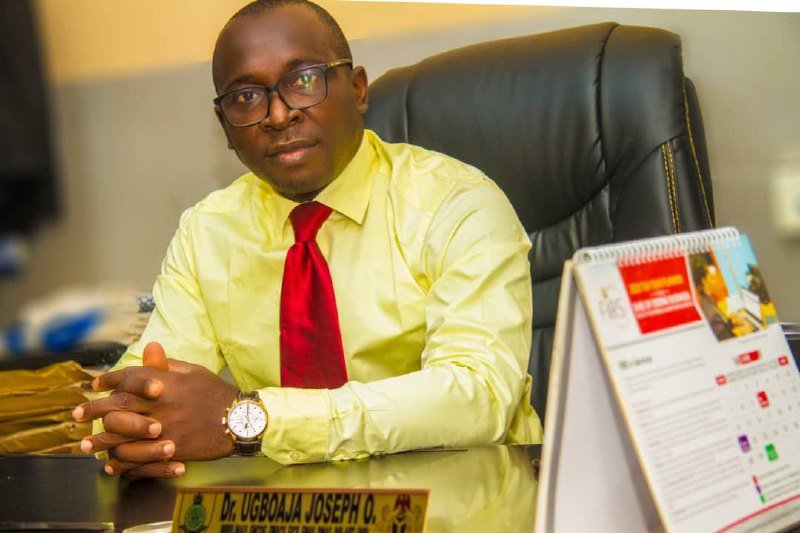Leadership comes with a lot of responsibilities, if mismanaged, you are setting yourself and your organization up for failure.
With over a decade of experience in leadership and management, Dr Ugboaja has broken down what it takes to manage a leadership position.
TEAM BUILDING IN ORGANIZATIONS BY DR UGBOAJA JOE
Let me welcome you to this edition of our leadership and management corner. Successful organizations rely on work teams to achieve their objectives.
Introduction: Transforming your organization or company or department or unit requires setting your aims and objectives which are derived from your vision and in alignment with the institutional vision and goals.
Types of Work Teams: Let’s start this series with learning some basic facts about types of Teams. This lesson discusses the different types of work teams commonly found in contemporary organizations, including functional, cross-functional and self-directed teams.
But what is a team? In the workplace, a team can be defined as any group of people organized to work together and cooperatively to meet the needs of the organization.
Functional teams or departmental/unit teams are composed of organizational members from the same department working together to achieve a specific objective.
The next type of work team is the Cross-Functional Work Teams which are made up of experts from various departments to work together towards some organizational goal.
A self-directed work team is designed to provide employees with a sense of ownership by allowing them to operate without a manager and by holding them accountable for their own performance. The functions that are usually performed by a manager, such as planning
In summary, effective management and transformation of modern organizations require a team approach in order to harness the available human resource within the organization, give employees sense of belonging as well as mobilize them to work towards achieving institutional goals.
Forming an Effective Work Team: Before discussing how to build an effective team, we need to understand first what an effective team means. Let us briefly look at what an Effective Team in Organizations is and analyze some of its characteristics.
You may wonder how a team is different from an ordinary workgroup. Workgroups are mainly for members to share information and make decisions so that each member can achieve his or her individual work goals.
Not all teams are successful at what they do. Perhaps you have worked on a team that spent too much time debating decisions or included members who did not take on a fair share of the work.
In addition to the characteristics we just discussed, teams need organizational support. Managers should make effective teamwork a high priority and offer rewards and incentives for good performance.
Having discussed some of the characteristics of an effective work team, let us now get down to knowing how to build one.
It’s 9 a.m. on a Monday morning, and your boss (CMD) walks into your office as CMAC to hand you a new project aimed at increasing the hospital clientele base over the remaining quarters of the year. This was a Board decision taken at the recently held Board meeting.
Of course, there is not! And yet to individual strengths must be aligned to Team goals. Determining which individuals will be best for your project does take a bit of work, but it is a task worth undertaking.
Firstly, Define Project Goals and that simply is to understand your project goals and what knowledge and skills will be required to reach those goals.
When you have assembled the team, break down the Project Goals into smaller, achievable tasks. If we consider the areas mentioned previously, that project team will comprise such task team/subcommittees as community/stakeholders engagement, staff attitude improvement, infrastructural improvement etc.
Then Recruit Team Members once you know what you want out of your team members and how many you will need, it’s time to recruit them. You can reach out to other resources within the organization to help suggest members of the team. In this instance, I find the departmental or unit managers very well or other members of staff who have worked in a meeting with the employee.
The next phase is to get to Know Your Team: Now that your team has been selected you will want to sit down with your team members and explain why they were chosen to participate on the team.
A little note on the Team leader
Of all the members of a team, the team leader is the most important and should be someone who can provide direction, instructions and guidance to the team for the purpose of achieving the project goal. An effective leader will know her team members’ strengths, weaknesses and motivations.
To build a successful team, as the leader, you need to get to know all the team members on one-on-one so that you understand their strengths and weaknesses. You’re also likely to learn what drives each team member and discover what motivates them to excel beyond expectations.
You should ensure that every person has equal opportunities for development so that any weaknesses can become strengths and encourages different viewpoints. Each person on a team will have different past experiences, opinions, and strengths.
As the Team Leader, you are generally responsible for the day-to-day operations of the team. You schedule meeting times and agenda. In these review meetings, the task teams will report on their activities within the period against the program time schedule.
The Team leader is the most important member of the team and should be someone who can provide direction, instructions and guidance to the team for the purpose of achieving the project’s goal.
Dr Ugboaja is the Chairman medical advisory committee (CMAC) of the Nnamdi Azikiwe University Teaching Hospital Nnewi.
Post Disclaimer
The opinions, beliefs and viewpoints expressed by the author and forum participants on this website do not necessarily reflect the opinions, beliefs and viewpoints of Anaedo Online or official policies of the Anaedo Online.




